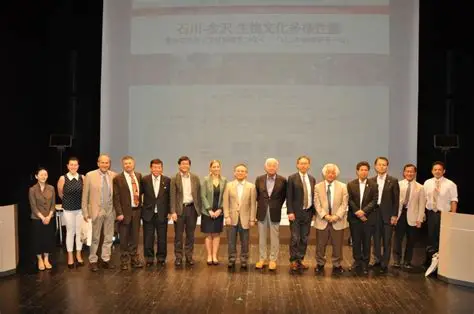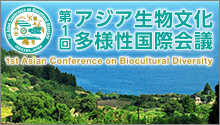Introducing the Ishikawa-Kanazawa Model for protecting and promoting local biological and cultural diversity
UNU-IAS OUIK held an international symposium [Ishikawa Kanazawa Biocultural Region: A model for linkages between biodiversity and cultural prosperity] on 28 May 2015 in Kanazawa City, Ishikawa, Japan. A diverse range of approximately 150 participants, including international guests, attended the event.
Keynote speeches were delivered by Mr. John Scott from the Secretariat of the Convention on Biological Diversity (SCBD) and Dr. Ana Persic (UNESCO), who introduced the Joint Programme “Linking Biological and Cultural Diversity” https://www.cbd.int/lbcd/, and explained the interrelationships between local culture and local natural settings through human activities. This therefore suggests the need for a comprehensive approach to protect local biological and cultural diversity. Dr. Persic emphasized that this comprehensive human-centered approach will be more important in the Sustainable Development Goals (SDGs), which will be adopted at the UN General Assembly in September 2015.
Their presentation was followed by a case from Florence presented by Assoc. Prof. Mauro Agnoletti (University of Florence). He introduced the European Regional Conference on Biocultural Diversity and the Florence Declaration as one of the conference’s outcomes. The declaration stipulates that richness of biological and cultural diversity contributes to human well-being in both urban and rural areas. The declaration also includes suggestions on mainstreaming a coordinated biocultural viewpoint into policy development and business processes. He defined the role of research institutions in scientifically examining the linkages between biological and cultural diversity in order to slow the degradation of local resources and promote integrated policy development.
A presentation was then delivered on local level linkages between Kanazawa City’s biological resources and traditional crafts, which have been compiled into maps, on how Ishikawa’s food culture has been fostered by rich local biological resources and cultural policies, and on a community preventive medicine project. Drawing on these cases, Prof. Asami Shikida (Hokkaido University) highlighted how the flourishing culture in Kanazawa has been sustained by surrounding rural biological resources and suggested the Ishikawa-Kanazawa Model for creating innovative cultural value, supported by local nature. This model is not based on the consumption, but rather the generation of natural resources.
During the panel discussion, panelists considered how to disseminate the Ishikawa-Kanazawa Model internationally. To wrap up the discussion, Mr. Tsunao Watanabe, OUIK Director, read the Kanazawa Message (PDF link) aloud, and symposium participants unanimously approved it with their applause.
OUIK will continue to function as a local platform for sharing activities aimed at conserving Ishikawa and Kanazawa’s biocultural diversity with the international community.




